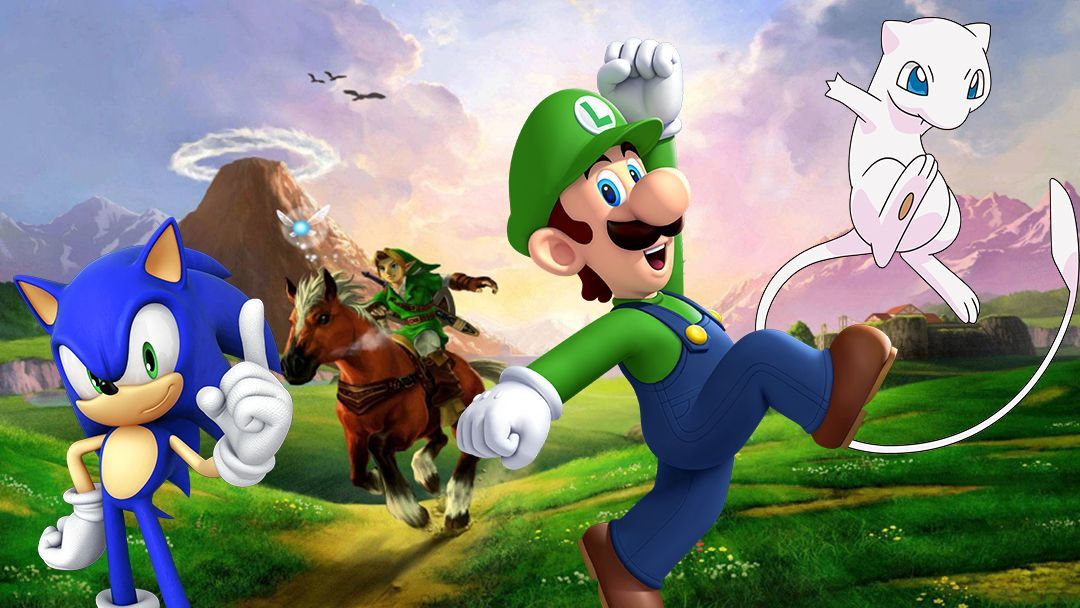
10 Biggest Video Game Hoaxes
By Rob Gordon 07 October 2016
Game Rant takes a look back at the biggest hoaxes in video game history, from mysterious characters and hidden game modes through to fabricated new consoles and devices.
With all of the complexities of the video game medium, it’s no surprise to see myths and legends appear. In the pre-internet age, these secrets were whispered from player to player, told to fellow arcade attendees or in conversations between friends at lunchtime. Although the veracity of such claims was much easier to prove with the growth of the internet, a whole new generation of hoaxers also found a way to spread these man-made myths.
Because of this, a number of giant hoaxes that have appeared over the years – with some of them even leading to real-world consequences for the franchises that they spawned from. Here’s Game Rant’s look at the 10 biggest hoaxes in the history of video games.
Find Bigfoot – Grand Theft Auto: San Andreas

With the release of Grand Theft Auto: San Andreas, Rockstar unleashed on gamers an open world of a level that many had never seen before. Although the Grand Theft Auto series had always had secret areas to explore, the sheer scope of the game led many to head out and hunt for Easter Eggs, with some making some rather outlandish claims. The most popular – and perhaps plausible – of the bunch was that Bigfoot was out there in the San Andreas countryside.
Unfortunately for Sasquatch-hunters, this legend turned out to be a hoax. However, Rockstar has never been without a sense of humor, and eventually Bigfoot did make its way into the developer’s games. Not only could the last few Bigfoot be found in Red Dead Redemption: Undead Nightmare, but players of GTA V can even turn into the supernatural beast.
Catch Mew – Pokemon Red and Blue

Most old-school Pokemon fans can no doubt attest to the believability of this video game hoax. After all, although being able to catch 150 Pokemon in Pokemon Red and Blue was very alluring, the prospect of a mysterious 151st Pokemon was almost too much to bear. The location of Mew in the game, however, was fairly difficult to get to, with the elusive ‘mon apparently hiding under a truck next to the S.S. Anne cruise ship by Vermillion City.
Getting to this truck was easier said than done, however, with the player seemingly needing to use Surf to get across to the truck. The problem is that Surf was unlocked long after the Victory Ann had left on its voyage, and the port itself left inaccessible. For those who did find a way to get to the truck, however, all that was there was disappointment and the realization that the location was nothing but a hoax.
Government Experiment Arcade Machines – Polybius

As if horror-themed games don’t give players enough scares as it is, some video game fans have taken it upon themselves to come up with spooky stories around gaming as well. One of these urban legends relates to a mysterious arcade machine called Polybius, which apparently caused insomnia, night terrors, and even suicide among those that played it. According to the legend, the machine was actually created by the US government and built with psychoactive effects in mind, and men in black were reportedly seen collecting data from the arcade machine.
The hoax of Polybius has gone on to be one of the longest-lasting video game urban legends, from its roots back in the 1990s through to modern day. Indeed, even to this day there are still some that claim that the legend is real. As a result, the tale of Polybius has become one of the most notorious creepypastas around.
Nintendo On

Not all hardware hoaxes are hostile in nature, however. Back in 2005, the gaming community was abuzz with exactly what Nintendo was going to do next. The company had been busily working on a brand new, revolutionary console that had been codenamed the Revolution, and just days before the start of E3 2005, the unthinkable happened – a video showcasing this new console leaked.
According to the video, Nintendo had been secretly creating a Virtual Boy successor of sorts known as the Nintendo On, and given the quality of the ‘leaked’ footage many were taken in. Of course, it wasn’t long before Nintendo did reveal its new console, which turned out to be the Wii.
Find Luigi – Super Mario 64

When Super Mario 64 was released, fans of the beloved platformer franchise were taken aback by the sheer quality of the game. The title gave a level of precision to 3D platforming that had not been seen up to that point, and gameplay that revolved very much around not only completing levels, but also discovering secrets. Among the best of the secrets was the rumor that Luigi was an unlockable playable character.
The ways in which Luigi could be unlocked were many, from hidden coins through to running laps around the castle, with the myth of Luigi perpetuated by an in-game statue that apparently read “L is real 2401.” Thankfully, fans of the other Italian plumber were finally given the chance to play as Luigi in Super Mario 64 with the game’s re-release for DS.
Head to Page 2 for More Video Game Hoaxes!
